Category: Conservation, environmental pollution and degradation – GS3M
RHESUS MACAQUE DECLARED VERMIN IN HIMACHAL PRADESH
20, Jul 2019
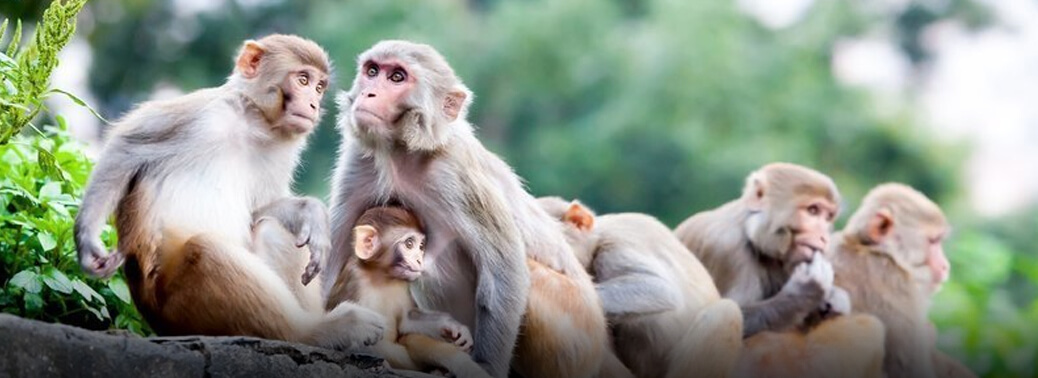
- Context– Union Environment Ministry (MoEFCC) has declared Monkeys (Rhesus Macaque) as ‘vermin’ in Himachal Pradesh.
What is Vermin?
- Any animal which poses a threat to human and their livelihood especially farming, can be declared Vermin under Schedule V of Wildlife Protection act 1972.
- States can send a list of wild animals to the Centre requesting it to declare them vermin for selective slaughter. Wildlife Protection Act 1972, empower every State’s Chief Wildlife Warden for culling. Wild boars, nilgai and rhesus monkeys are protected under Schedule II and III, but can be hunted under specific conditions.
Wildlife (Protection) Act, 1972:
- The Wildlife Protection Act, 1972 is an Act of the Parliament of India enacted for protection of plants and animal species.
- The Act provides for the protection of wild animals, birds and plants; and for matters connected there with or ancillary or incidental thereto.
- Though Rhesus Macaque monkeys are protected species under Schedule II of the Wildlife (Protection) Act, 1972, the law allows for it to be hunted by declaring it ‘vermin’ for a specific period if it poses a danger to human life or property.
Permissions for hunting wildlife:
- The Wildlife Act empowers every State’s Chief Wildlife Warden to authorise hunters to cull animals in a region where they are a proven nuisance.
- Wildlife laws also consider hunted wildlife as ‘government property’ and impose restrictions on how these carcasses must be disposed.
Issues:
- Himachal Pradesh forest department’s website clearly shows a marked decline in the number of monkeys in the state, yet the Centre declares it as vermin due to overpopulation.
- Previously monkeys were sterilised by the government has cost the tax payer Rs 50 crore.
- Many wildlife conservationists believe that a species coming into conflict with humans is a clear symptom of forest mismanagement and forest department must be held accountable for human-wildlife conflict situation anywhere in the country.
Key Provisions of the Wildlife Protection Act:
- The Act extends to the whole of India, except the State of Jammu and Kashmir which has its own wildlife act.
- It defines five types of protected areas viz.
- National Parks
- Wildlife Sanctuaries
- Community Reserves
- Conservation Reserves
- Tiger Reserves.
- Act has Six Schedules with varying degrees of protection to different kinds of animals and plants.
Schedules of the Wild Life Protection Act
- Six Schedules in Wildlife Protection Act with varying degrees of protection.
- Schedule I and Part II of Schedule II provide absolute protection.
- Penalties for Schedule III and Schedule IV are less and these animals are protected.
- Schedule V includes the animals which may be hunted.
- Example: Common crow, Fruit bats, Mice & Rats only
- Schedule VI contains the plants, which are prohibited from cultivation and planting.
- Beddomes’ cycad (Cycas beddomei)
- Blue Vanda (Vanda soerulec)
- Kuth (Saussurea lappa)
- Ladies slipper orchids (Paphiopedilum spp.)
- Pitcher plant (Nepenthes khasiana)
- Red Vanda (Rananthera inschootiana
Fly Ash
04, Jul 2019
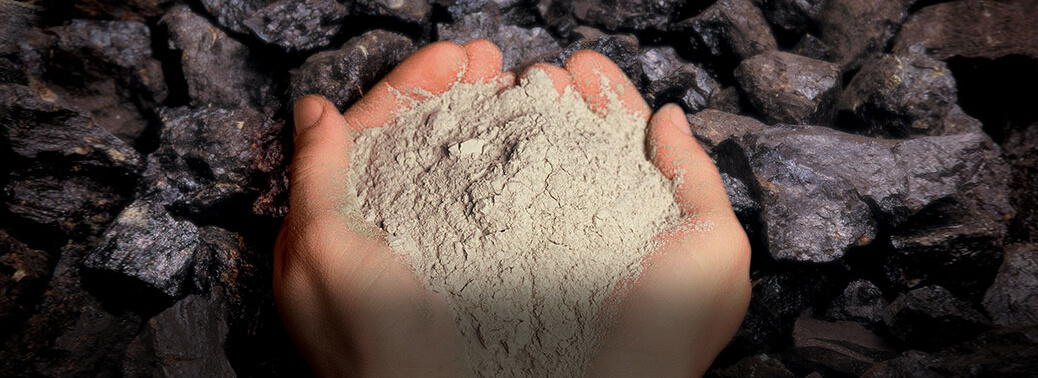
Why in News?
- The National Green Tribunal has sought a report from the authorities on the current status on disposal and management of fly ash.
Fly Ash:
- Fly ash is a major source of PM 2.5 (fine, respirable pollution particles) in summer. It becomes airborne, and gets transported to a radius of 10 to 20 kms.
- It can settle on water and other surfaces.
- Fly ash contains heavy metals from coal, a large amount of PM 2.5 and black carbon (BC).
- Fly ash, the end product of combustion during the process of power generation in the coal based thermal power plants, is a proven resource material for many applications of construction industries and currently is being utilized in manufacturing of Portland Cement, bricks/blocks/tiles manufacturing, road embankment construction and low-lying area development, etc.
Asean Vows to Tackle Plastic Waste
23, Jun 2019
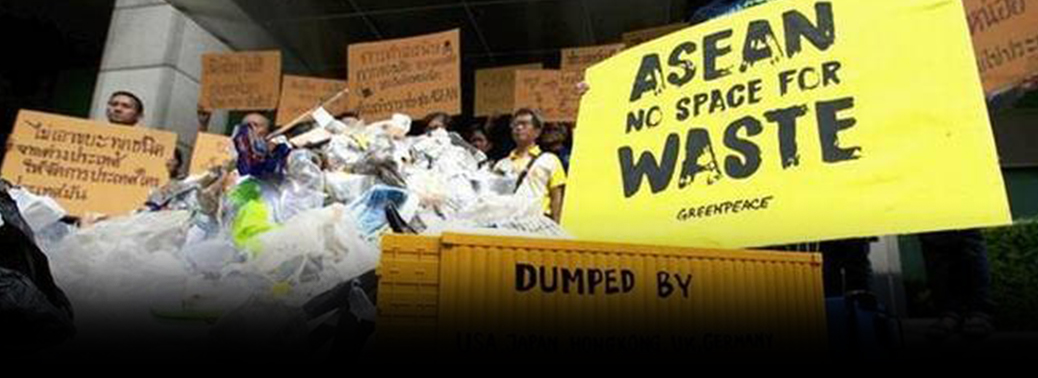
- It is learned that five countries viz; China, Indonesia, Philippines, Vietnam, and Thailand dump more than half of the eight million tonnes of plastic waste that end up in oceans every year.
- This was reported by the Ocean Conservancy report.
What is Ocean Conservancy Report?
- It is an international NGO that strives to keep the oceans clean. Founded in 1972.
- Their first initiative was the Whale Protection Fund, which focused on saving whales and protesting commercial whaling by Russia and Japan.
- Ocean Conservancy seeks solutions for a healthy ocean and the wildlife and communities that depend on it.
Bangkok Declaration 2019:
- ASEAN leaders are expected to sign the declararion on fighting the marine waste – to prevent and significantly reduce marine debris.
- The agreement does not impose penalities on countries or companies which fail to specify measures to tackle the problem.
- It does not mention anything on single use plastics which are more harmful for the nature.
What are single Use Plastics?
- Single-use plastics, often also referred to as disposable plastics, are commonly used for plastic packaging7 and include items intended to be used only once before they are thrown away or recycled.
- These include, among other items, grocery bags, food packaging, bottles, straws, containers, cups and cutlery.
Other issue with Plastic Waste:
These Southeast Asian nations are the world’s top importers of trash from developed countries like the U.S and Canada.
These wastes often end up in landfills and waterways without being properly processed.
G 20 NATIONS
17, Jun 2019

- It is an international grouping that consists of central bank governors and government representatives of 19 countries and the EU.
- The nations consist of 90% of world’s GDP, 80% of world trade and 2/3rd of world’s population.
- It is an initiative of the World Bank, IMF and the WTO.
- The G20 summit this is scheduled to take place in Osaka in Japan on June 28-29. Ahead of this, the G20 Environmental Ministers met near Karuizawa, Japan.
Outcome:
- Adopt a new implementation framework for actions to tackle the issue of marine plastic waste on a global scale.
- It had earlier adopted G20 action plan on marine litter in 2017 at Hamburg Summit.
- It is to follow a life cycle approach to prevent and reduce plastic waste litter discharge into oceans. The countries will share best practices, promote innovation, and boost scientific research and analytical methodologies.
- Japan will host the first meeting under the framework during the G20 Resource Efficiency Dialogue.
INDRAYANI RIVER
17, Jun 2019
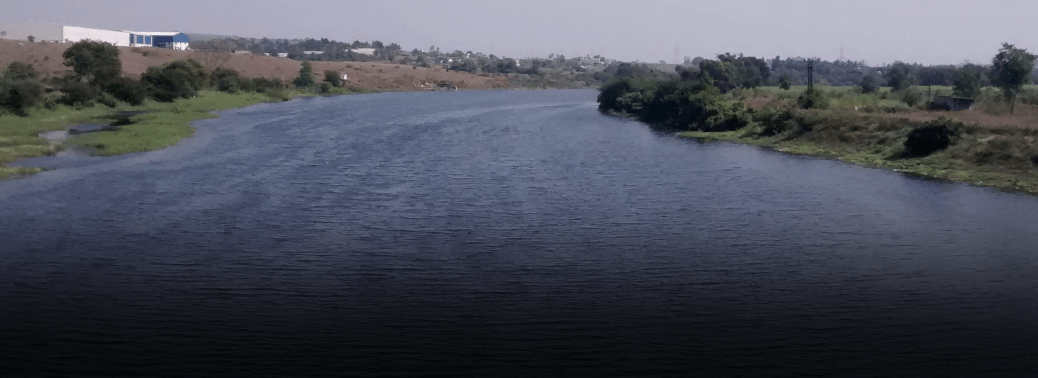
- UPSC Questions Related to rivers -cultural place associated, historic place associated, tributaries, National parks, wild Sanctuary, Biosphere.
- UPSC Question on Rivers- Chandrabhaga 2019, Cauvery 2019, Yammuna 2016, Bhramaputra 2017,
Context:
- Incident in which around 4,000 fishes died in Indrayani River, Maharashtra.
About:
- Indrayani river is one of the important place where holy Pandarpur with cultural significance is located. Indrayani river joins Bhima River, which is tributary of Krishna River
Bhima River:
- Bhima River originates in Bhimashankar hills near Karjat in Maharashtra Holy City of Pandharpur is on the bank of Bhima River
- Bhimashankar is one of the twelve esteemed Jyotirlinga shrines
Krishna River:
- It is the fourth largest river in India after the Ganga, Godavari and the Narmada Krishna River rises at Mahabaleswar in district Satara
- It flows through Maharastra, Andhra Pradesh, Telangana and Karnataka.
- Home to Ancient Satavahana and Ikshvaku Dynasty kings. Vijayawada is the largest city
Narmada:
- Krishna River rises at Mahabaleswar in district Satara
- It flows through Maharastra, Andhra Pradesh, Telangana and Karnataka.
- Home to ancient Satavahana and Ikshvaku Dynasty kings. Vijayawada is the largest city
Places Associated with Indrayani River:
- Bhaja & Kanheri Caves
- Rock cut architecture in India
- Bhaja Caves located at the Valley of Indrayani River, near Lonavala Approximately 2,200 years ago, circa 200 BC
- Chaitya and Viharas
NEW SPECIES IN EASTERN HIMALAYA- BALSAMS OR JEWELWEEDS.
16, Jun 2019
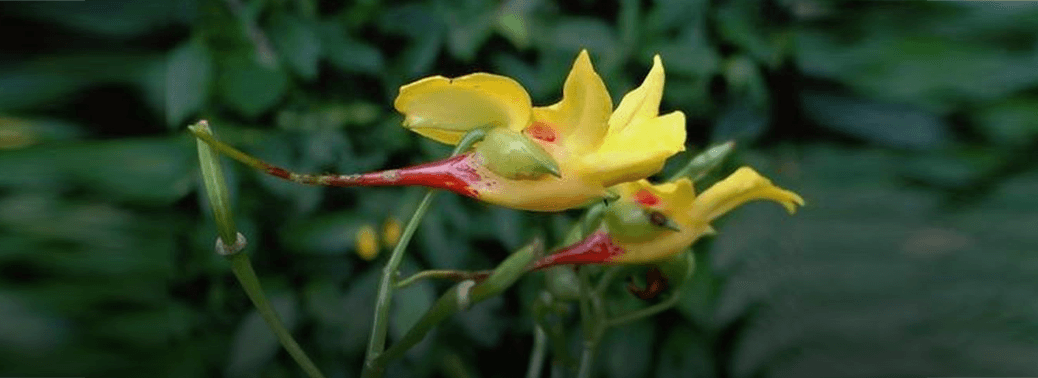
- Context-23 new species from the eastern Himalayas of a group of plants commonly known as Balsams or jewelweeds
- UPSC mainly asks question regarding new species of plant, animal found in Western Ghats, Himalayas, North east, Andaman and Nicobar.
- UPSC prelims questions- Himalayan nettle (Girardinia diversifolia)-2019
- There are about 230 species of Balsams found in India and majority of them are found in the eastern Himalayas and Western Ghats. These species need proper conservation initiatives as they are highly vulnerable, especially to climate change.
- They are mostly found in stream Margins, Moist Roadsides, Near Waterfalls and Wet Forests.
RAIN DEFICIT AND WATER STRESS
08, Jun 2019

Why in News:
- Reportedly, nearly 40% of the country is facing an acute paucity of pre-monsoon rain, causing severe water distress in scorching heat.
Background: / How is the rain deficit scenario?
- Though summer droughts are very common, the extent and intensity of aridity witnessed this year are rare.
- The rain deficit has been as high as 48% in the southern peninsula, especially Tamil Nadu and coastal Karnataka.
- It is nearly 30% in western India, notably Gujarat and large parts of Maharashtra, and 17% and 12% in the Central and north-east region respectively.
- Shortfalls of 70 to 80% have also been reported from some places.
- The overall countrywide average rainfall between March and May, 2019 remained 23% below normal.
What do monsoon forecasts suggest?
- The rain deficit conditions across the country are a matter of grave concern. But the redeeming factor is that the onset of the monsoon is round the corner.
- The rain during the 4-month monsoon season (June to September) is anticipated to be well spread out.
- It is also expected to be quantitatively normal or somewhat below normal.
- The India Meteorological Department (IMD) forecast has suggested rainfall to be likely around 96% of the long-period average (LPA).
- On the other hand, private weather forecaster Skymet has put it at 91%.
What is the Concern Though?
- The problem is that both IMD and Skymet have forecast that the monsoon would be sluggish/slow to begin with.
- The reason cited for this is the existence of El Nino (warming up of the Pacific Ocean), which often impairs the monsoon performance.
- Also, IMD and Skymet differ on the progression of El Nino.
- The IMD expects El Nino conditions to turn neutral in the second half of the rainy season. But Skymet reckons it to last the whole season, even if in a weaker form.
- So clearly, there is a possible delay in relief from the current water crisis in some areas.
What is a favourable factor yet?
- Of the three main facets of drought (meteorological, hydrological, agricultural), the present conditions conform chiefly to the meteorological drought (rainfall inadequacy).
- Only in some areas, aridity has accentuated to cause hydrological drought, reflected in exhaustion of the surface and groundwater resources.
- The overall hydrological profile of the country is still positive.
- The total water stock in 91 major reservoirs monitored by the Central Water Commission is
- around 14% above the last year’s corresponding level.
- It is 3% higher than the long-period average (May, 2019 data).
- Agricultural drought has, by and large, been averted as the rabi crops have mostly been harvested and the kharif ones are yet to be planted.
What is the Way Forward?
- An enduring solution to the recurring water crisis largely lies in drought-proofing the vulnerable areas.
- In-situ conservation of rainwater should be a key priority in this regard.
- The need is to construct rainwater-harvesting structures at the field, village and watershed levels.
- Either digging ponds or putting up check dams at suitable sites on the natural water drainage routes should be taken up.
- This is a time-tested water management practice that has helped people survive even in the chronically arid areas.
- Piecemeal measures as isolated water conservation works under the rural employment programmes can, at best, offer only limited gains.
- So what is needed is a broad-based planning, keeping in view the whole watershed, transgressing village, district or even state boundaries.
NGT stays linkage of Godavari, Krishna and Penna
01, Jun 2019
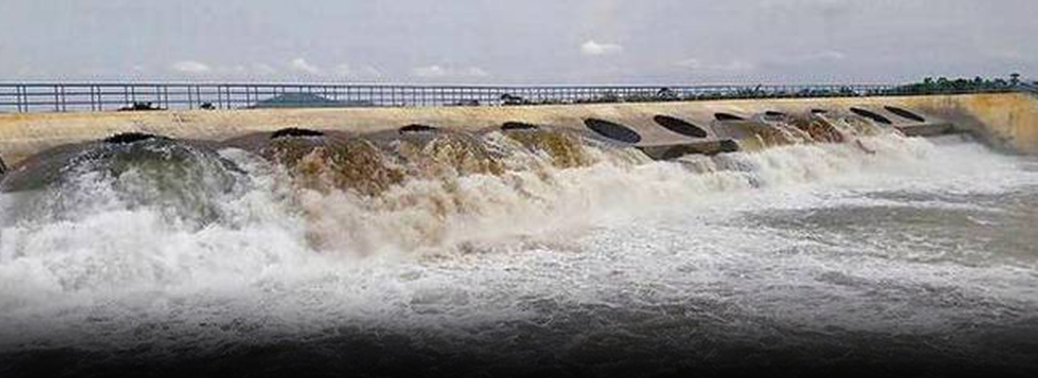
Why in News:
- The National Green Tribunal (NGT) has issued an order staying the Andhra Pradesh Government’s scheme to link Godavari Krishna and Penna Rivers of the State. It ordered that Ministry of Environment should submit a report on it within a month.
Details:
- The Tribunal in an order released said that the State could not go ahead with the project without getting clearance from the Central Water Commission (CWC) and the Ministry of Environment, Forest and Climate Change.
- A Bench of the tribunal in an order “restrained” Andhra Pradesh from proceeding further with the project till acquired environmental clearance, consent to establish and operate the project under provisions of the Environmental (Protection) Act, 1986, Water (Prevention and Control of Pollution) Act, 1974 and the Air (Prevention and Control of Pollution) Act, 1981. The tribunal ordered the Regional office of the Union Environment Ministry to inspect the river linkage project along with the Central Pollution Control Board and the State Pollution Control Board and submit a factual report.
CWC
- CWC is apex Technical Organization of India in the field of Water Resources.
- It is presently functioning as an attached office of Union Ministry of Water Resources, River Development and Ganga Rejuvenation.
- It is charged with the general responsibilities of initiating and coordinating schemes of control, utilization and conservation of water resources throughout the country.
NGT Raps states for not curbing pollution in Ganga
01, Jun 2019
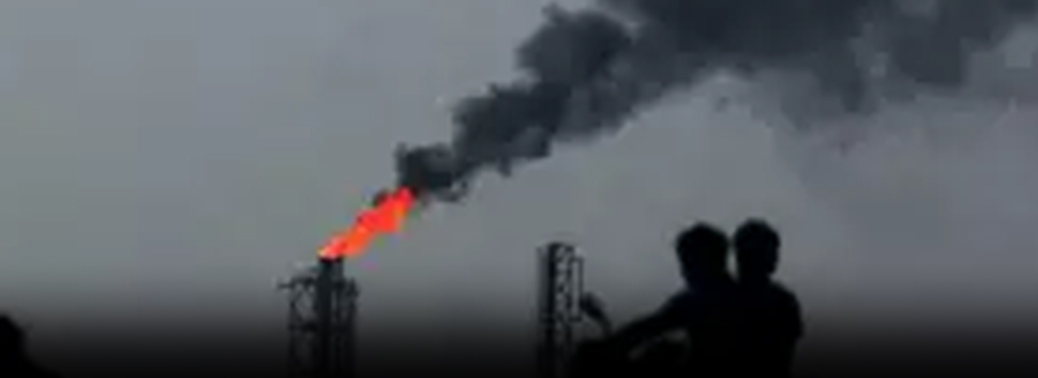
Why in news
- The National Green Tribunal (NGT) has imposed a penalty of Rs. 25 lakh each on the States of Bihar, Jharkhand and West Bengal for not taking adequate steps to curb pollution in the river Ganga.
Details:
- A Bench headed by NGT Chairperson observed that while in Bihar there was no progress in terms of completion of sewage treatment infrastructure projects, in West Bengal only three out of the 22 projects had been completed. “The States of West Bengal, Bihar and Jharkhand are not represented in spite of orders of this Tribunal by which we recorded strong disapproval to such attitude of the said States. Such insensitivity in a serious matter is a matter of concern,” the Bench observed.
- NGT directed the [three] States to deposit Rs. 25 lakh each by way of interim compensation for continued damage to Ganga and inaction of the said States even in responding to this Tribunal. The States were directed to deposit the penalty within a month with the Central Pollution Control Board, and the amount “may be spent on restoration of the environment.” Noting that the discharge of effluents is an offence, the green panel directed the Uttar Pradesh government to prohibit industrial activity that resulted in pollution.
What is National Green Tribunal (NGT)?
- It is a specialised body set up under the National Green Tribunal Act (2010) for effective and expeditious disposal of cases relating to environmental protection and conservation of forests and other natural resources. With the establishment of the NGT, India became the third country in the world to set up a specialised environmental tribunal, only after Australia and New Zealand, and the first developing country to do so.
- NGT is mandated to make disposal of applications or appeals finally within 6 months of filing of the same.
- The NGT has five places of sittings, New Delhi is the Principal place of sitting and Bhopal, Pune, Kolkata and Chennai are the other four.
Philippines returns trash to Canada
01, Jun 2019

Why in news
- Tonnes of garbage sent to the Philippines years ago was shipped back to Canada after a festering diplomatic row.
Details:
- Asian nations are increasingly objecting to being treated as dumping grounds for international trash.
- The 69 shipping containers of garbage were loaded onto a cargo vessel at Subic Bay to begin the lengthy trip to Canada.
Malaysia to return non-recyclable plastic waste
- The Malaysian Government has announced it will return around 3,000t of smuggled non-recyclable plastic waste to their countries of origin, including the UK, US, Australia and Canada. The offending countries were urged to review their management of plastic waste and to stop shipping waste out to developing countries.
Waste dumping proposal defeated
- A proposal by India to prevent developed countries from dumping their electronic and plastic waste onto developing countries, was defeated at the recently concluded meeting of the Basel Convention in Geneva.
- “India and Nigeria were the only countries that had strongly opposed the guidelines, pushed by the European Union, to dilute safeguards against the trans-boundary movement of e-waste,”
The Basel Convention
- Formally called: The Basel Convention on the Control of Transboundary Movements of Hazardous Wastes and Their Disposal. It is an international treaty
- Aims to reduce the movements of hazardous waste between nations, and specifically to prevent transfer of hazardous waste from developed to less developed countries
VARANASI HAS ONLY ONE AIR QUALITY MONITORING
18, May 2019
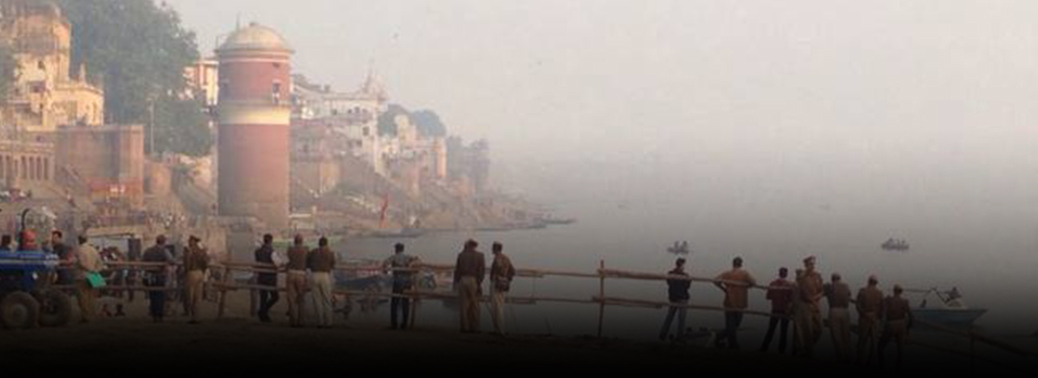
Why in News:
- Varanasi is being ranked as one among the top 3 most polluted cities in the world three years ago, a Right to Information request has found.
Details:
-
The Central Pollution Control Board’s 2015 dataset found Varanasi’s air quality to be
among the most toxic in the country. - It had only one air quality monitor capable of measuring particulate matter 2.5 and particulate matter 10 levels. Out of 227 days measured in 2015, the city had zero ‘good- air’ days and this was attributed to the heavy levels of industrial pollution.
- Biomass burning, vehicular emissions, brick kilns and diesel generator sets were also major contributors. Varanasi is one of the cities that is part of the National Clean Air Campaign, an initiative by the Union Environment Ministry to improve air quality in 100 cities by 20% at least by 2024. One of the commitments under this is to improve air quality monitoring.
National Clean Air Programme / Objective:
Target:
Implementation:
- NCAP talks of a collaborative, multi-scale and cross-sectoral coordination between central ministries, state governments and local bodies. The CPCB will execute the nation-wide programme for the prevention, control, and abatement of air pollution within the framework of the NCAP. NCAP will be “institutionalised” by respective ministries and will be organised through inter-sectoral groups that will also include the Ministry of Finance, Ministry of Health, NITI Aayog, and experts from various fields.
Other features of NCAP
- Increasing the number of monitoring stations in the country including rural monitoring stations, Technology support
- Emphasis on awareness and capacity building initiatives Setting up of certification agencies for monitoring equipment Source apportionment studies
- Emphasis on enforcement Specific sectoral interventions.
National Ambient Air Quality Standards
- National Ambient Air Quality Standards are the standards for ambient air quality set by the Central Pollution Control Board that is applicable nationwide.
- The CPCB has this power of setting the standards given by the Air (Prevention and Control of Pollution) Act, 1981. The main objective of Air (Prevention and Control of Pollution) Act 1981 is to prevent and control Air Pollution. Recent industrialization and increased number of air polluting sources has polluted the environment with toxic materials which not only harm human health but are also a threat to the eco system in general.
- In order to cope up with deteriorating air quality, Government of India enacted Environment (Protection) Act, 1986, which is an umbrella act for the protection of all aspects of the environment.
The main functions of CPCB are:
- To advise the appropriate government regarding improvement of the quality of air and the prevention, control and abatement of air pollution. To execute and plan a nation-wide programme for the prevention, control and abatement of air pollution. To carry out due diligence related to prevention, control and abatement of air pollution.
- To provide annual standards for the quality of air.
- To compile, collect and publish technical and statistical data related to air pollution.
ASSAM PRODUCES AN ORCHID LINK TO THE ORIENT
13, May 2019

Why in News:
- A discovery in Assam has given India one of its smallest orchids in terms of size and duration of bloom to be recorded botanically.
Details:
- Lecanorchis taiwaniana, which the Japanese Journal of Botany has published as a “new record for the flora in India” in its latest issue, is a mycoheterotroph, one of two types of parasitic plants that have abandoned photosynthesis.
- It appeared close to the nigricans species while bearing 90% similarity with the taiwaniana species named after Taiwan.
- Lecanorchis taiwaniana adds to the orchid wealth of northeast India, which has 800 of some 1,300 species in the country.
- About 300 species are found in the Western Ghats and 200 in the northwestern Himalayas The orchid, discovered earlier in Japan, Taiwan, and Laos, was found to have a maximum height of 40 cm and a blossoming period of five-six days.
- The herbal value of this orchid that flowers and fruits from July to September is yet to be ascertained. But as it derives its energy and nutrients from fungus, it may be of herbal importance
- Medicinal Plants and Mushrooms of India with special reference to Assam contains information on 1,400 medicinal plants and mushrooms, including Costus pictus or the insulin plant used in treating diabetes mellitus, and Ophiorrhiza mungos used in treating cancer because of the alkaloid Camptothecin present in it.
- Also known as Indian snake root, O. mungos has been the subject of medicinal research.
Parasites
- The word parasite is derived from the Greek word meaning -one that eats at another table and is estimated to be from around 5900BC.Parasites are an incredibly varied group of organisms that live within host cells. They are smaller than their host organism and reproduces faster by causing more damage to the host. They receive all sort of benefits like food and shelter from the host. Their size ranges from tiny, single-celled organisms to worms over 20- 30 m in length.
Cyclone Fani’s Fury Creates Four New Mouths in Odisha’s Chilika Lake
11, May 2019
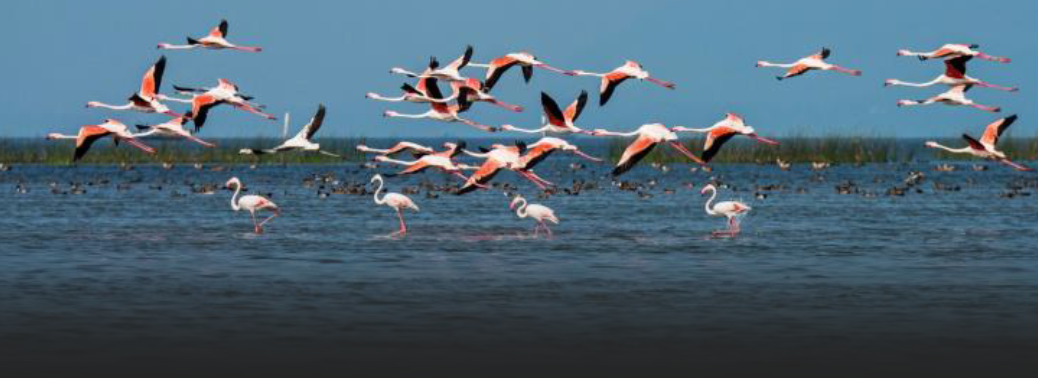
Why in News:
- The extremely severe cyclone, Fani, has created four new mouths in Chilika Lake, Asia’s largest brackish water lake, connecting to Bay of Bengal.
Details:
- Chilika lagoon had only two active mouths — the point where it meets the sea before Fani hit the Odisha coast on May
- Four new mouths have opened due to wave energy with high tidal prism.
Salinity surge
- While three new mouths have come up between the two functional mouths near Sanpatna and Arakhakuda, a smaller mouth has been noticed on the northern
- a lot of sea water is entering Chilika Lake.
- If sea water ingression goes up, fish migration will increase and the biodiversity will get richer. But its long-term impact is something we will have to keep a watch on,
- Three of the four sectors are more or less marine The rise in salinity will lead to increase in productivity. Chilika Lake is a mixture of saline and fresh water
- Increase in salinity will not have an impact on Irrawaddy dolphins as they can survive in salinity. Though nesting grounds at Panchakudi and Mangalajodi have been affected, they would be ready to host migratory birds by the time they arrive in Chilika Lake
Barn owls to fight Rodents in Lakshadweep
10, May 2019

Why in news:
- The Union Territory of Lakshadweep have ‘recruited’ three pairs of barn owls from Kerala to fight against the rodents.
Details:
- The owls were chosen from among healthy birds rescued by the Kerala Forest Department.
- The biocontrol measure is spearheaded by the Lakshadweep Administration, with the Krishi Vigyan Kendra (KVK) at Kavaratti providing the technical knowhow.
- Coconut is an important money-spinner for the islands, but the pesky rodents account for 30 to 40% of the yield loss. Total production stood at 8.76 crore nuts in 2017-18.
Rodent control
- Rodent pests are especially problematic in terms of agriculture and public health since they can inflict considerable economic damage associated with their abundance, diversity, generalist feeding habits and high reproductive rates.
- To quantify rodent pest impacts and identify trends in rodent pest research impacting on small-holder agriculture in the Afro-Malagasy region we did a systematic review of research outputs from 1910 to 2015, by developing an a priordefined set of criteria to allow for replication of the review process.
ThreemethodsTo combat the menace of the rodents:
- Acute-Toxic
- Low Toxic
- Non-Toxic
Acute-Toxic
- This method is used to control rats in open spaces outside the buildings. This is used against Norway Rats, which generally stay in Nalas and dustbins. The rats die within minutes due to the Phosphine gas released by our chemical. This is very effective against Bandicoots. The disadvantage is we cannot overcome the bait shy character of rats; and bait rotation has to be done very frequently.
Low Toxic:
- This method uses the second-generation anti-coagulants, which are effective after the very first dose. They eliminate the bait-shy among rodents, as the target does not die immediately unlike in the acute toxic method. The rats affected by the Anti-Coagulants come out into the open and die eliminating the risk of stinking.
Non-toxic:
- In this method glue pads, mechanical traps, runway traps etc are used which making it completely safe for people as well as pets.
- a) Second-generation anti-coagulants with bromadiolone 0.25%CB
- b) Low toxic and harmless to other Pests.
- c) Does not include bait shyness
- d) Tends to make rats come out in the open and die.
- e) Non-toxic methods used are : Deploying Glue boards, Snap traps, mechanical traps, runway traps
BELLANDUR LAKE IS DRYING UP
09, May 2019
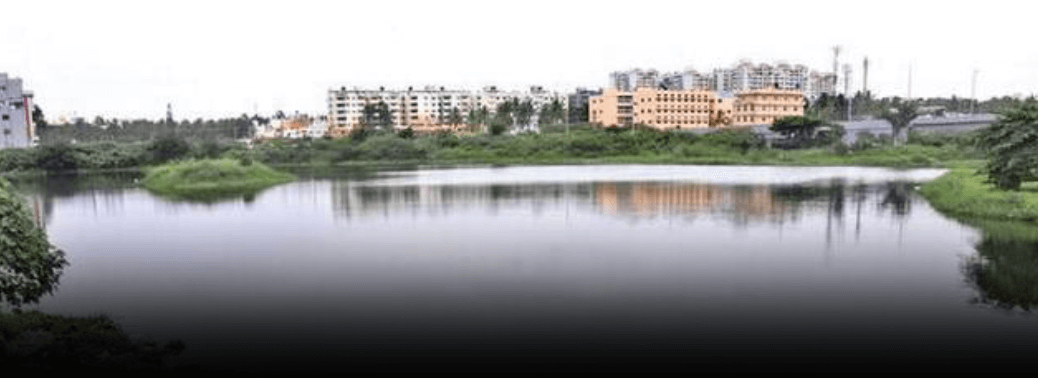
Why in News:
- Bellandur Lake, the city’s most polluted waterbody, is drying up. In the past few days, the water level has reduced with the lakebed being visible in some places
Why the lake count has started to decrease?
- The terrain on which Bengaluru is situated allowed for the natural formation of lakes. These lakes, were at one time, the main sources of water for the city.
- The essential nature of lakes to life has even gave rise to development of a sacred practice called Karaga. The
- city has lost an estimated 79% of water bodies and 80% of its tree cover from the baseline year of 1973. As the city grew, it faced a dilemma. If the additional population was to be accommodated, it would require more land. If it decides to protect all its lakes, it must expand far beyond its already extensive boundaries, thereby hurting the interests of farming. In this context, the city chose to hurt the lake beds instead.
What did the state government do?
- Bangalore Development Authority (BDA) is currently the custodian of the water body for its rejuvenation.
- But BDA feels that there is no point in restoring a lake if sewage water is not stopped entering the lake.
- Bengaluru Water Supply and Sewerage Board is in charge of diversion of sewage water, which clearly it has not been able to do.
- Meanwhile, the response of the state government too has been piecemeal.
- But without addressing the question of how many lakes a modern city could sustain, they typically will end up with policies that are considered impractical by those who see cities as engines of growth.
CIRCLE OF LIFE: ON ECONOMIC GROWTH FACTORING ECOSYSTEM
09, May 2019

Why in News:
- Biodiversity assessments must be factored into all economic activity
Details:
- The overwhelming message from the global assessment report of the Intergovernmental Science-Policy Platform on Biodiversity and Ecosystem Services (IPBES) is that human beings have so rapaciously exploited nature, and that species belonging to a quarter of all studied animal and plant groups on earth are gravely threatened
- If the world continues to pursue the current model of economic growth without factoring in environmental costs, one million species could go extinct, many in a matter of decades Catastrophic erosion of ecosystems is being driven by unsustainable use of land and water, direct harvesting of species, climate change, pollution and release of alien plants and animals in new habitats. there is particular worry over the devastation occurring in tropical areas, which are endowed with greater biodiversity than others; only a quarter of the land worldwide now retains its ecological and evolutionary integrity, largely spared of human impact.
- Nature provides ecosystem services, but these are often not included in productivity estimates: they are vital for food production, for clean air and water, provision of fuel for millions, absorption of carbon in the atmosphere, and climate moderation.
- Expanding agriculture by cutting down forests has raised food volumes, and mining feeds many industries, but these have severely affected other functions such as water availability, pollination, maintenance of wild variants of domesticated plants and climate regulation.
- IPBES assessment points out, marine plastic pollution has increased tenfold since 1980, affecting at least 267 species, including 86% of marine turtles, 44% of seabirds and 43% of marine mammals
The Intergovernmental Science-Policy Platform on Biodiversity and Ecosystem Services
- The Intergovernmental Science-Policy Platform on Biodiversity and Ecosystem Services or IPBES is an independent inter-governmental agency formed to reinforce the interface between science and policy for ecosystem and biodiversity services in order to conserve and sustainably use biodiversity, achieve long-term well-being for humans, and sustainable development.
- 94 governments established the IPBES on 21st April 2012 in Panama City. Any member of the UN can join this body.
- The organisation is dedicated to making IPBES as the pioneering inter-governmental body for evaluating earth’s biodiversity and ecosystems, and the basic services they provide to society
ONLY 10 OF 100 SEWAGE PROJECTS ON GANGA HAVE BEEN COMPLETED
04, May 2019
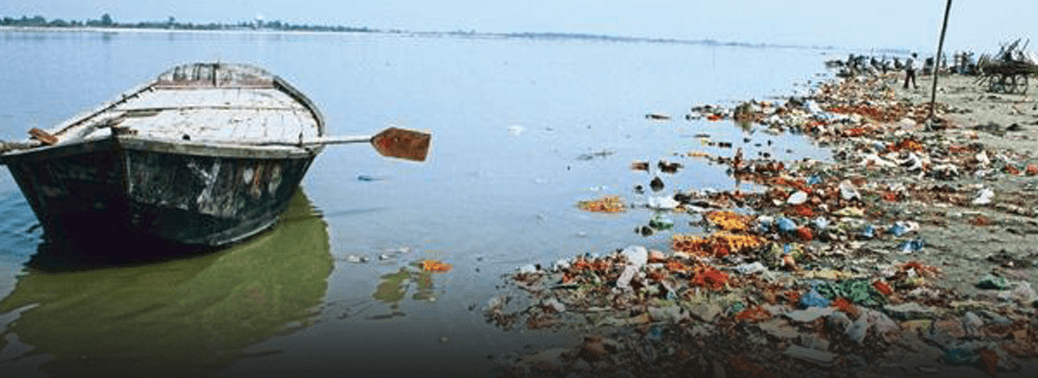
Why in News:
- Only 10 of the 100 sewage infrastructure projects commissioned after 2015 have been finished under the Namami Gange mission, according to records.
Details:
- Commissioning of sewage treatment plants (STP) and laying sewer lines are at the heart of the mission to clean the Ganga.
- Nearly ₹23,000 crore has been sanctioned of the ₹28,000 crore outlay for sewage management work.
- River-front development, cleaning Ghats and removing trash from the river — the cosmetic side of the mission — make up about for ₹1,200 crore of the mission outlay.
- Uttar Pradesh, responsible for about three-fourths of the inadequately treated industrial waste and municipal sewage, had 18 pre-2015 STP and sewage infrastructure projects commissioned. The incomplete projects are reflected in the river quality. None of the towns through which the Ganga courses through has water fit for bathing or drinking, according to water monitoring reports by the State and Central Pollution Control Board.
Hybrid Annuity-PPP model
- The Union Cabinet had approved to Hybrid Annuity-PPP model with 100% central sector funding. Under this model, development, operation and maintenance of STPs will be undertaken by Special Purpose Vehicle (SPV) created by winning bidder at local level
National Mission for Clean Ganga
- NMCG is a river cleaning project.
- NMCG is the implementation wing of National Council for Rejuvenation, Protection and Management of River Ganga
- It was established in 2011 as a registered society under Societies Registration Act, 1860.
- It has a two-tier management structure and comprises of Governing Council and Executive Committee.
- The Union Cabinet has recently approved changes allowing the National Mission for Clean Ganga to fine those responsible for polluting the river. Earlier this power was vested solely with the Central Pollution Control Board. The power to fine the polluters is derived from the Environment Protection Act.






